In my journey through the realms of agile and organisational efficiency, I’ve often encountered a rather amusing yet telling analogy that perfectly encapsulates a common pitfall in our approach to governance and optimisation. Picture this: a cog in a machine, struggling to turn because it’s bogged down by the other cogs around it. Now, if we were to take a drastic step and remove all the teeth from this cog, it would spin freely, right? But here’s the catch—it would no longer serve its purpose in driving the entire system forward.
This scenario is a classic example of local optimisation gone awry. We’ve made the cog more efficient in isolation, but at the expense of the overall system’s functionality. This is a mistake I see far too often in organisations, especially when governance is treated as a separate entity rather than an integral part of the system.
The Dangers of Local Optimisation
When we focus solely on optimising individual components without considering their role within the larger system, we risk creating inefficiencies that can ripple throughout the organisation. Here are a few key points to consider:
Isolation vs. Integration: Just like our cog, when governance operates in a silo, it can lead to decisions that benefit one area but hinder others. It’s crucial to foster an environment where all parts of the organisation are aligned and working towards a common goal.
Short-term Gains vs. Long-term Success: Local optimisations may yield quick wins, but they often come at a cost. In the long run, these decisions can create friction and misalignment, ultimately undermining the organisation’s objectives.
Communication Breakdown: When governance is disconnected from the rest of the organisation, it can lead to a lack of understanding and collaboration. This disconnect can stifle innovation and slow down progress, as teams may not be aware of the broader implications of their work.
Bridging the Gap
So, how do we avoid falling into the trap of local optimisation? Here are some strategies that I’ve found effective in my experience:
Foster Cross-Functional Collaboration: Encourage teams to work together and share insights. This collaboration can help ensure that decisions made in one area consider the impact on the entire organisation.
Integrate Governance into Daily Operations: Rather than treating governance as a separate function, embed it into the daily workflows of teams. This integration can help create a culture of accountability and transparency .
Focus on the Bigger Picture: Always keep the organisation’s goals in mind. When making decisions, ask yourself how they align with the overall mission and vision. This perspective can help guide more holistic decision-making.
Conclusion
In conclusion, while it may be tempting to optimise individual components for immediate efficiency, we must remember that true success lies in the synergy of the entire system. By bridging the gap between governance and operational teams, we can create a more cohesive and effective organisation. Let’s strive to ensure that every cog in the machine not only spins freely but also contributes meaningfully to the collective success of the system. After all, it’s not just about making one cog better; it’s about making the entire machine work seamlessly together.



























